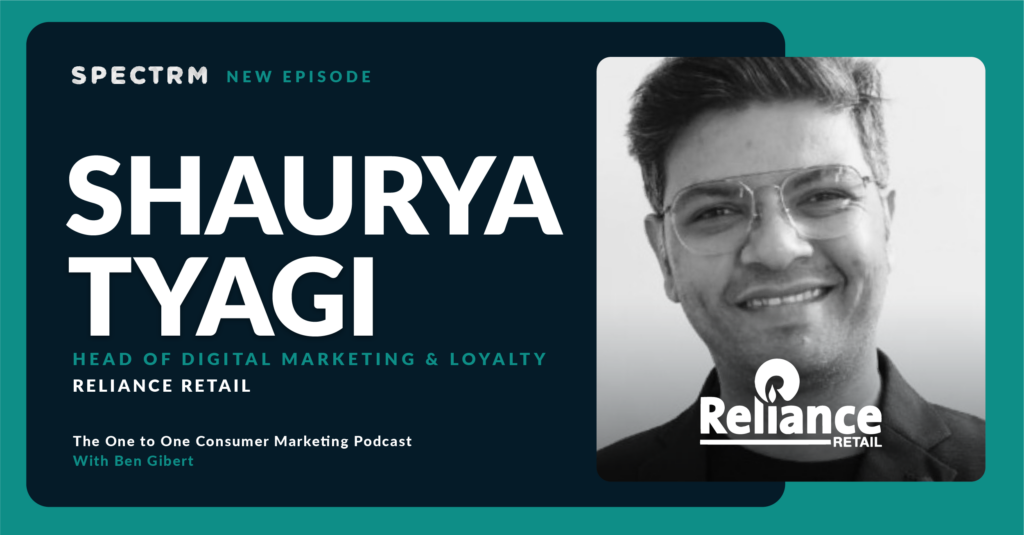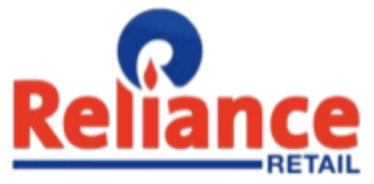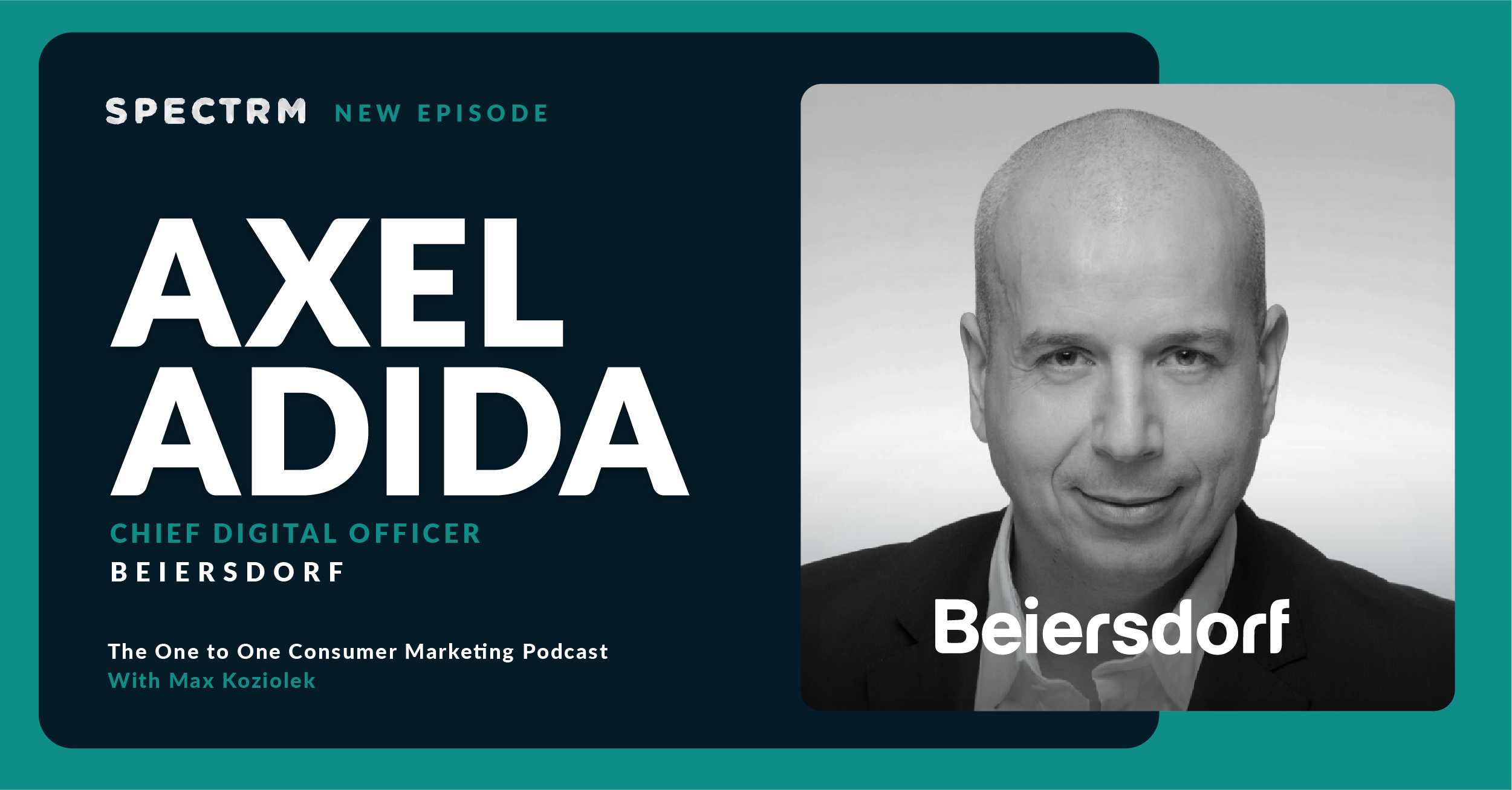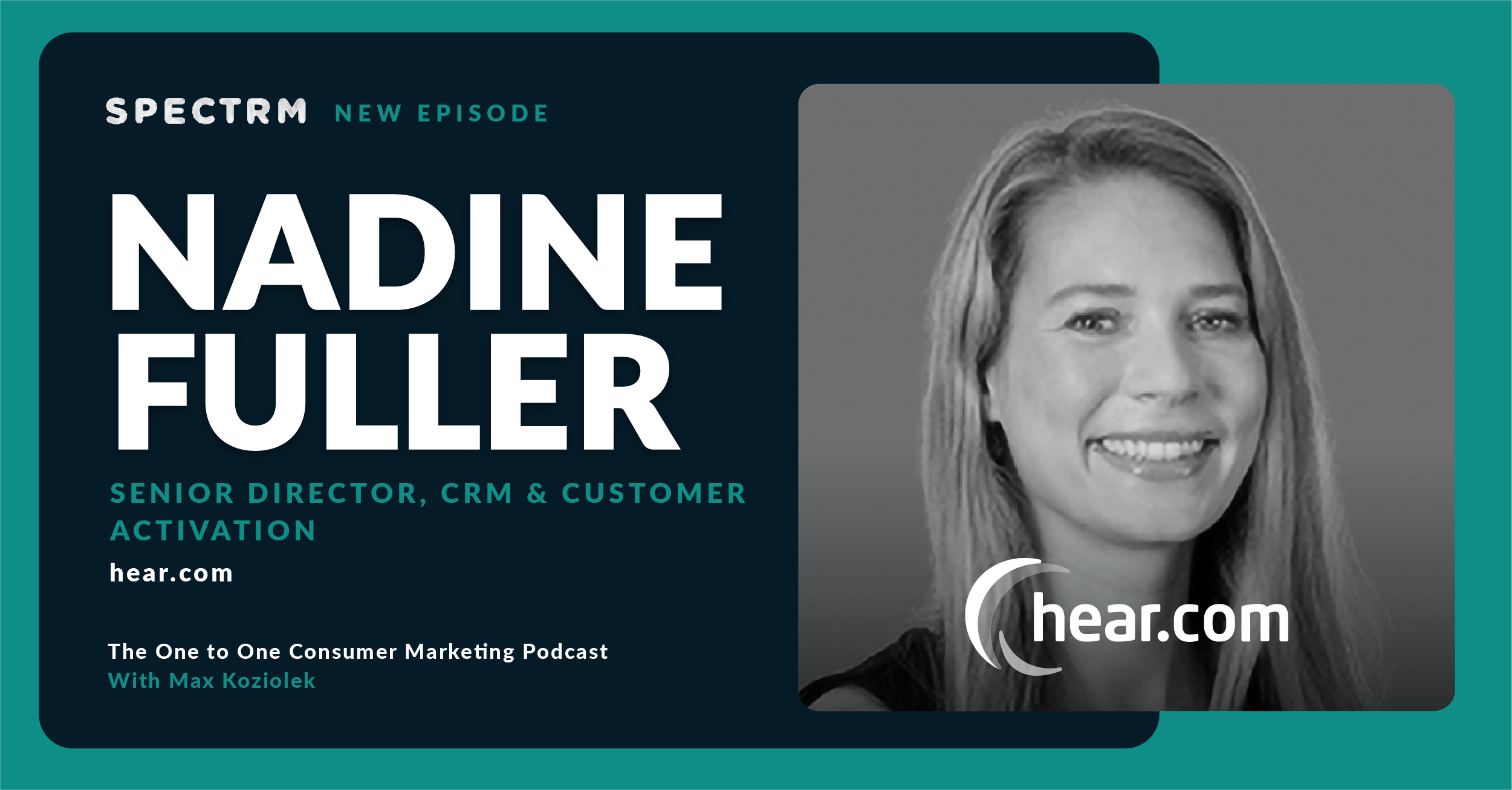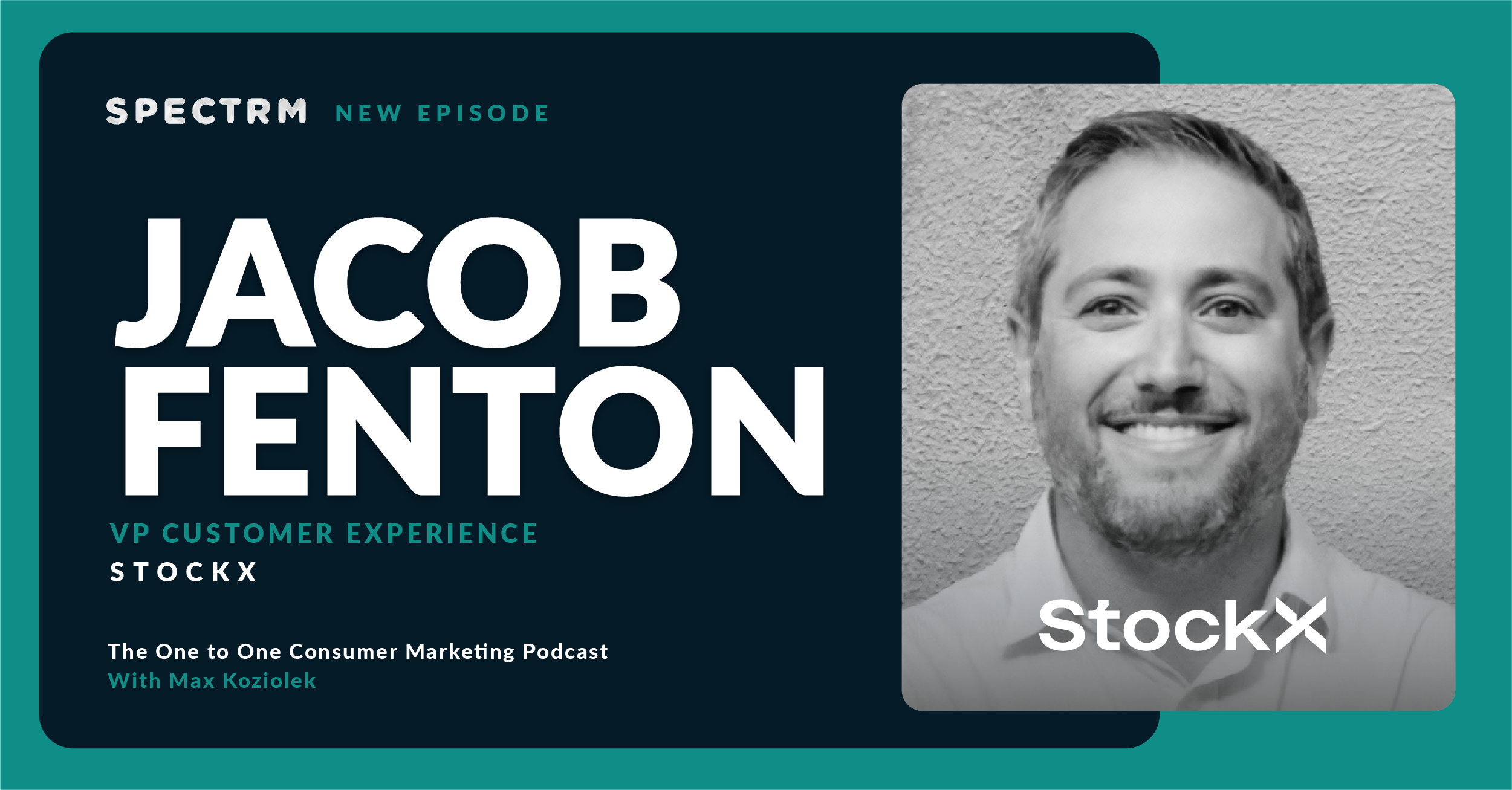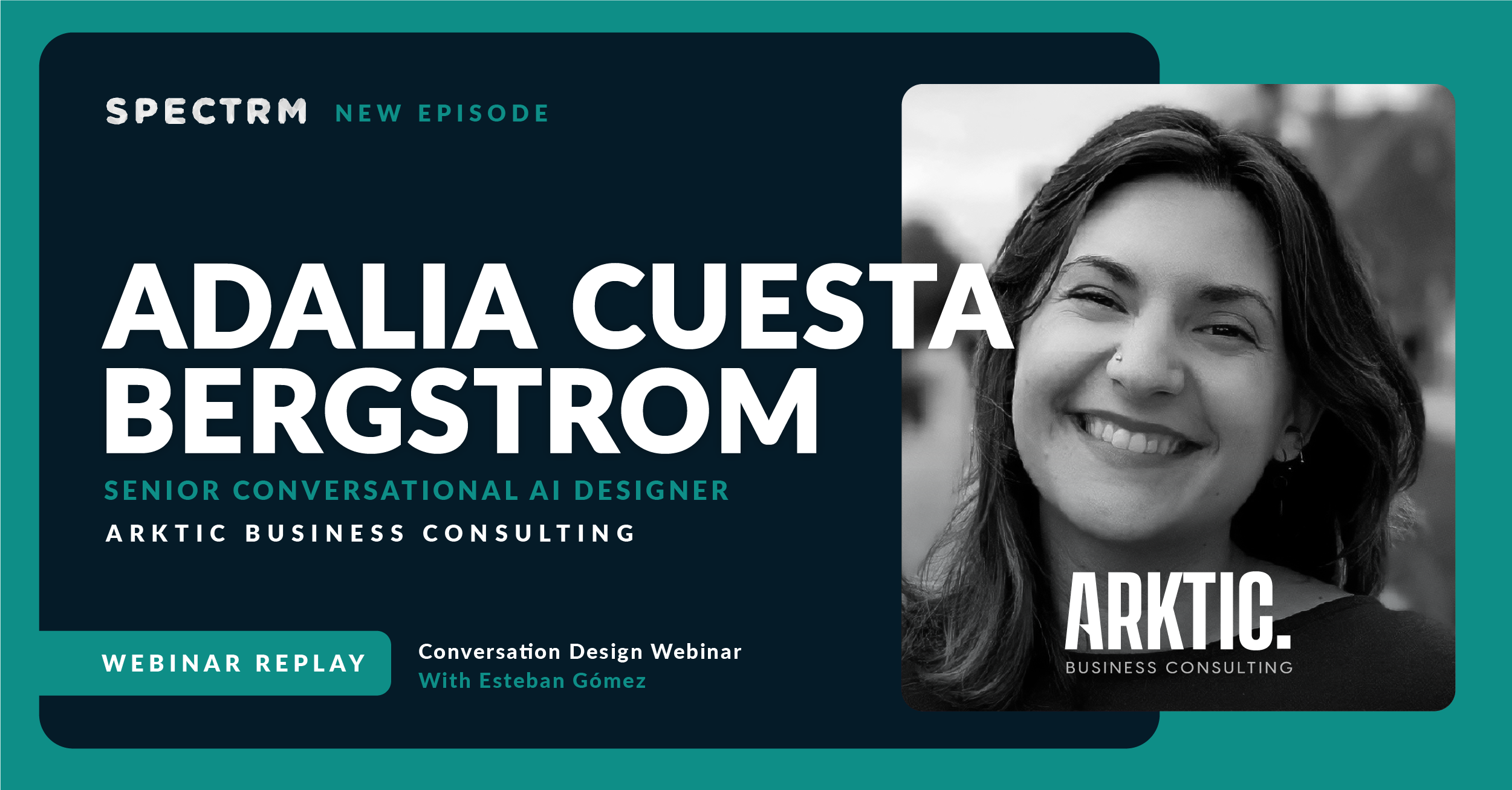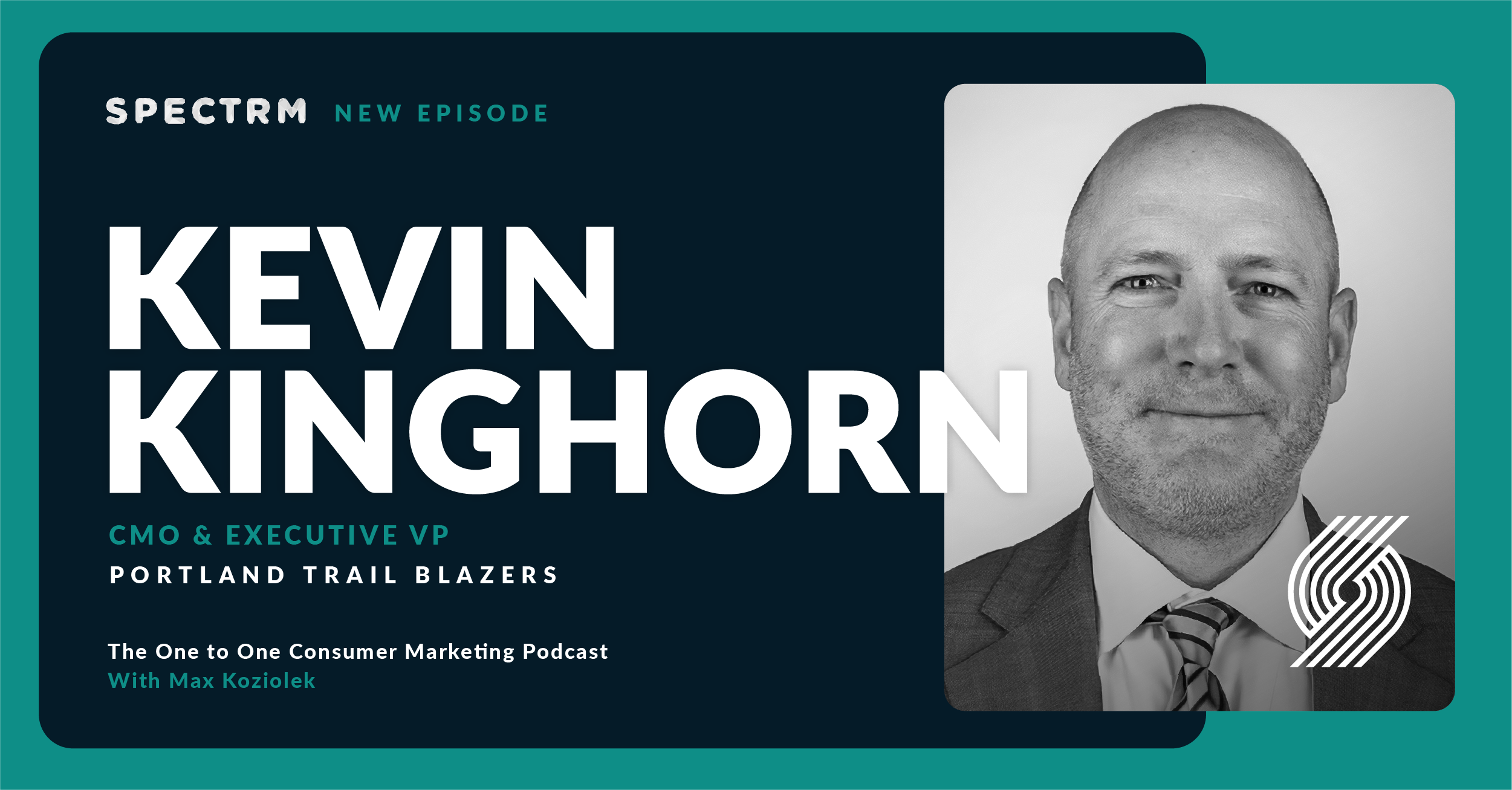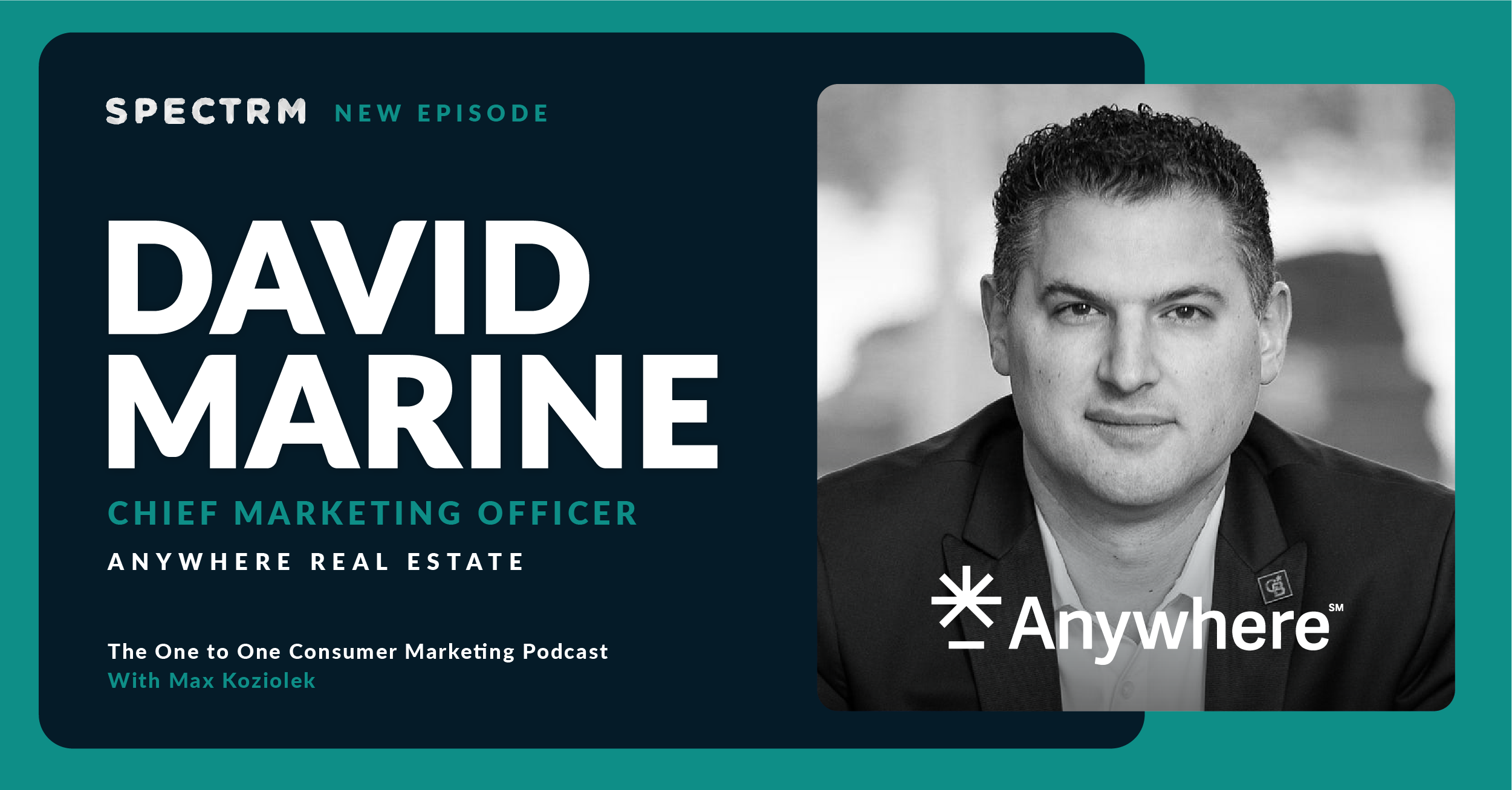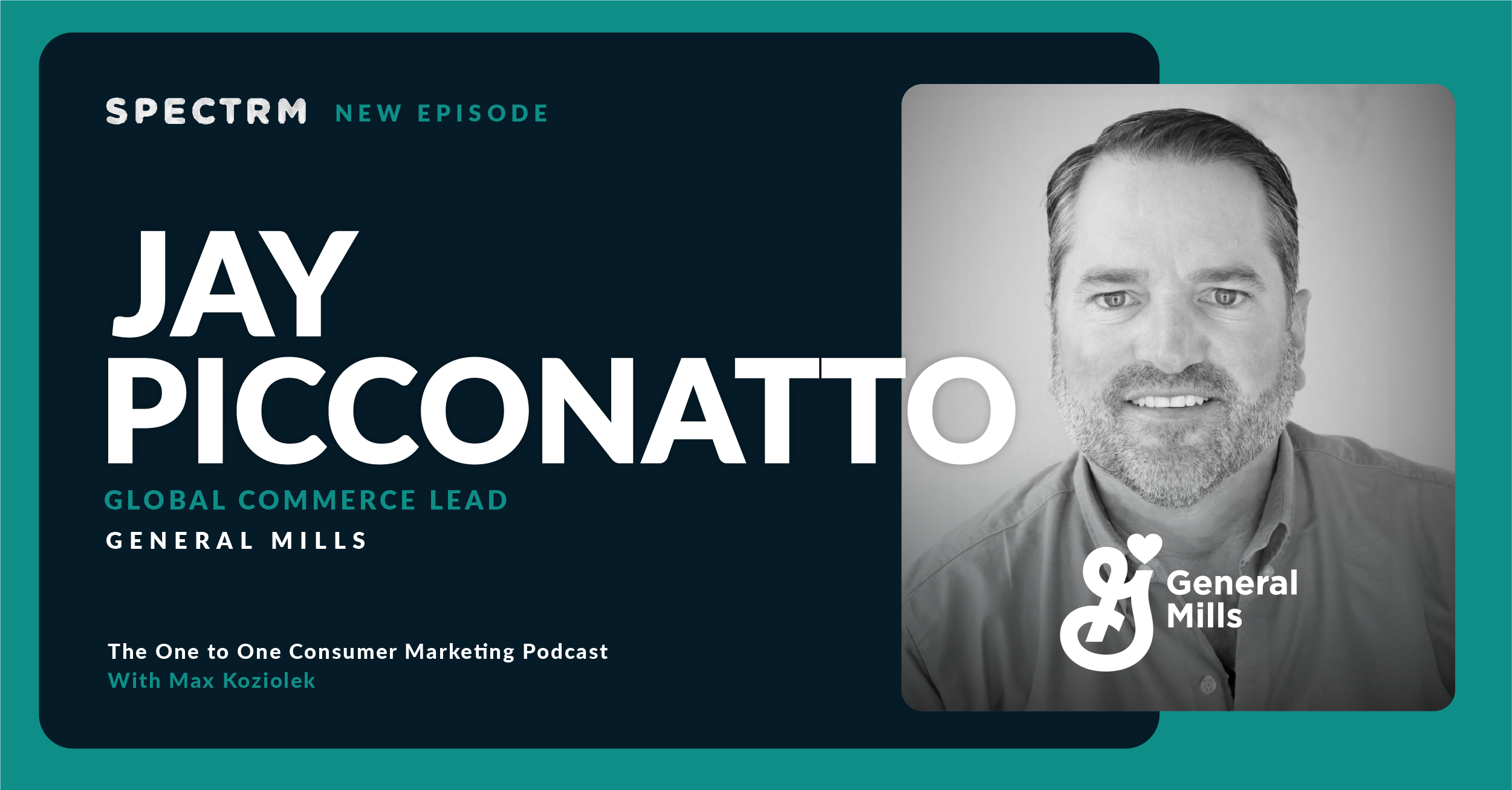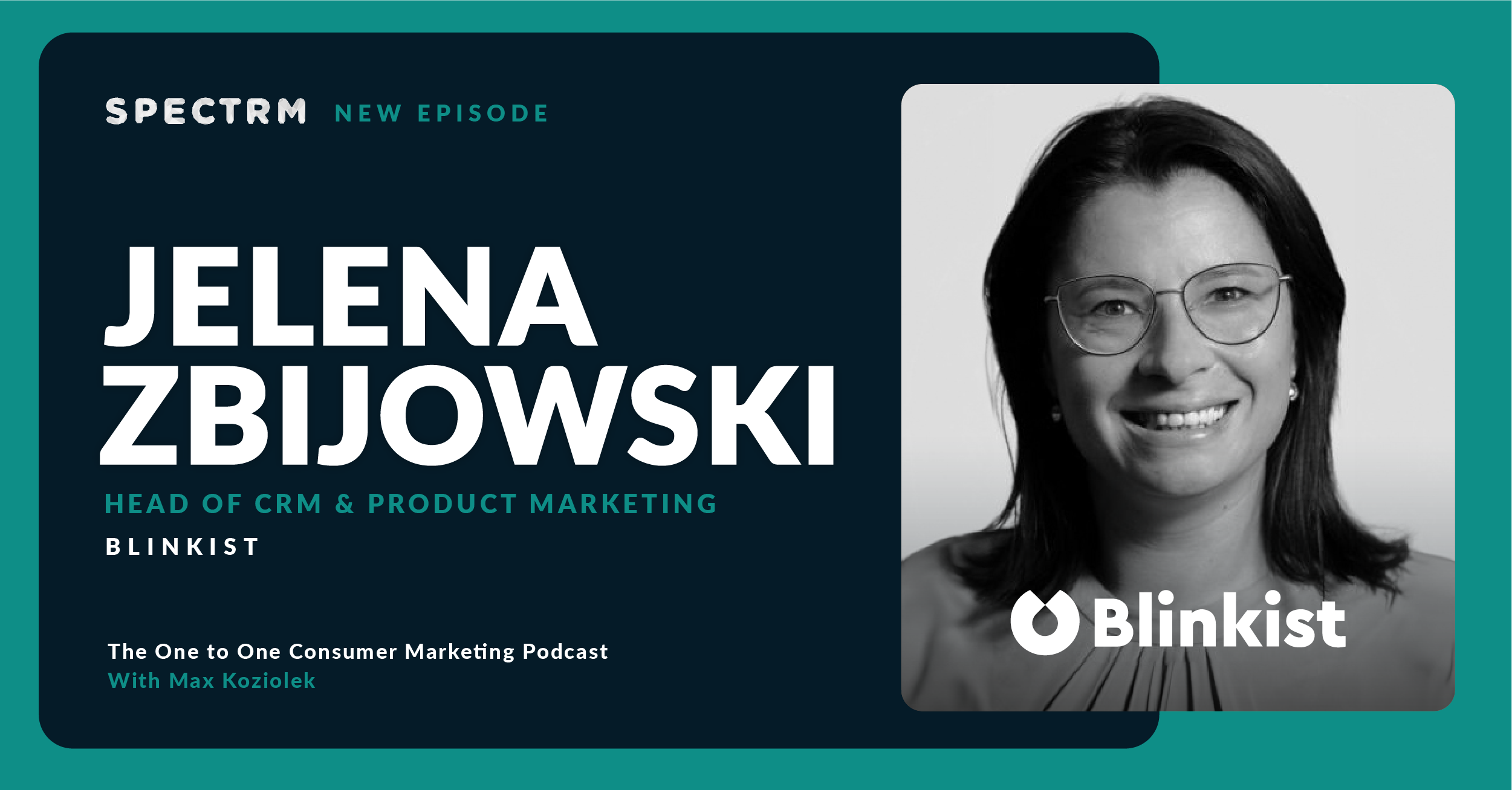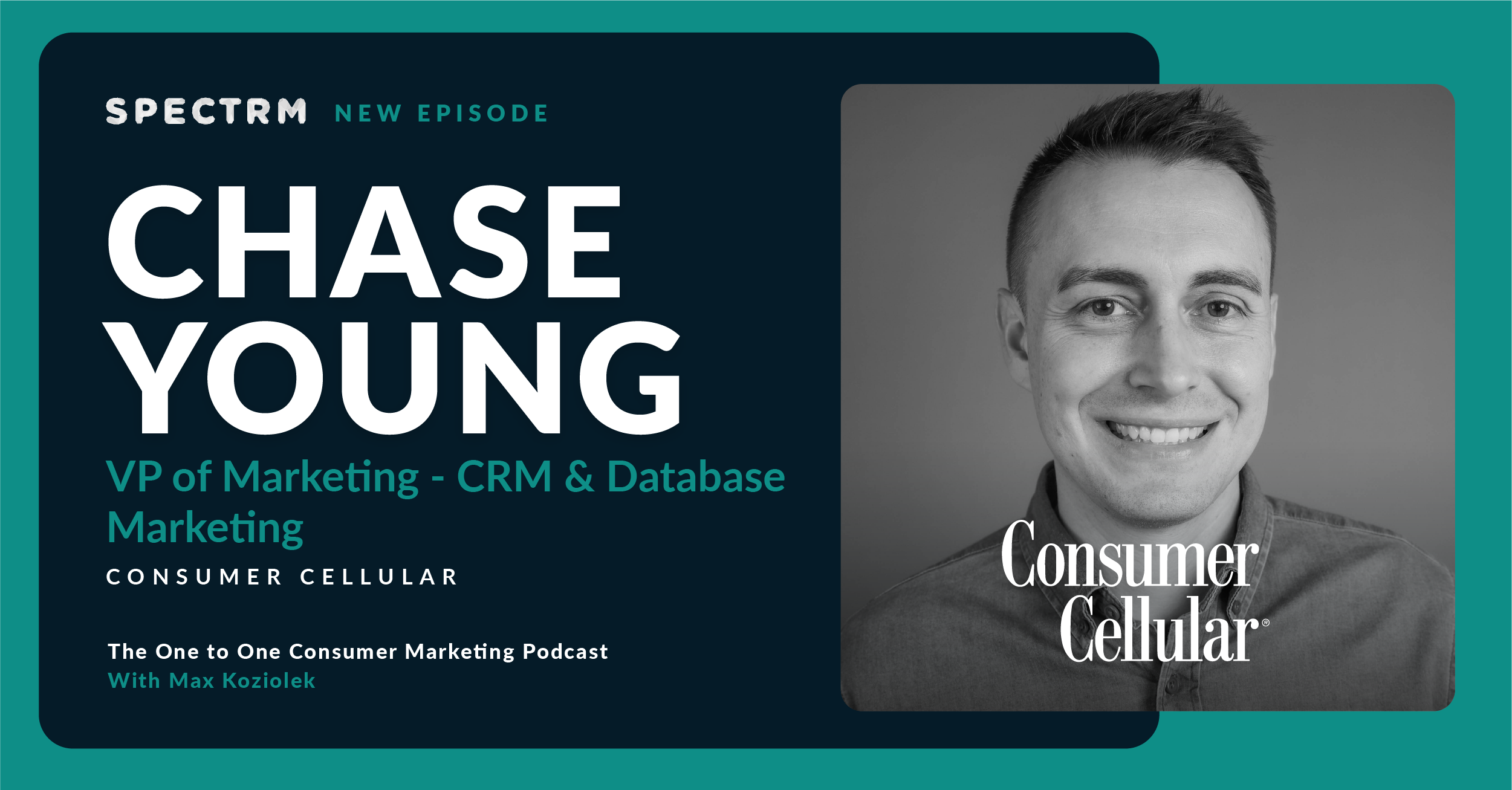Summary
Ben speaks with Shaurya Tyagi, Head of Digital Marketing & Loyalty at JioMart partner, the online shopping platform of Reliance Retail, India’s largest retailer. They discuss how to increase retention by focusing on building rapport for customers and creating “wow” moments, the need for quality customer experiences in both physical and online marketplaces, and the right way to build relationships on WhatsApp. They also discuss the unique challenges to personalization in India, how AI and humans can work together for better customer experiences, and remembering that audiences are more than just numbers.
Topics discussed
- Shaurya’s journey from building a D2C business for an insurance company, working in gaming, and working for a mobile manufacturing company, to overseeing retention and loyalty at JioMart partner, the online shopping platform of Reliance Retail.
- How to build brand and product awareness in both physical stores and through online websites and marketplaces, and how to create “wow” experiences across channels.
- The importance of building a rapport with your customer in order to build trust, solve problems, and exchange value.
- The challenges to customer retention and personalization in India, especially when so many people speak so many different languages.
- How to engage customers through messaging on WhatsApp, and why the best customer experience is to create relevant content for them that draws them to engage with you.
- How AI and humans can work together to create better customer service experiences.
- Advice for marketers that includes why it’s important to remember that your audience is not just numbers, but people.
Views mentioned in the podcast are personal and do not represent the organization Shaurya works in or has worked in the past.
But I think what is very important is that building a rapport with the customer. Now, what I mean by that is that when you build a rapport, you tell them that I'm someone that you can trust. I'm someone that will have your back when you are facing an issue. I'm someone who will make sure that if you don't get the desired service which I promised at the start, there is enough — I have an escalation metric so that you can reach to the right stakeholders who can answer your sort of questions.
Guest biography

- Good at unlearning and adapting to challenging situations while not losing focus on what’s essential for the people who make a business.
Company overview
Reliance Retail is the retail initiative of RIL and an epicentre of our consumer-facing businesses. It has been ranked as the fastest-growing retailer in the world. It is ranked 53rd in the list of Top Global Retailers and is the only Indian Retailer to feature in the Top 100. It is the largest & the most profitable retailer in India with the widest reach. It has nearly 249 million registered customers buying across all its formats. It recorded more than 780 million footfalls across all its stores in FY23, a scale unmatched by any other retailer in India. With over 3 Million daily transactions, Reliance Retail operates at a scale unparalleled in the Indian retail industry and continues to enrich the quality of lives of millions of Indians every day.
Industry: retail | www.relianceretail.com
Subscribe to the podcast newsletter
Transcript
00:00
Shaurya Tyagi
But I think what is very important is that building a rapport with the customer. Now, what I mean by that is that when you build a rapport, you tell them that I’m someone that you can trust. I’m someone that who will have your back when you are facing an issue. I’m someone who will make sure that if you don’t get the desired service, which I promised at the start, I have an escalation metrics that you can reach to the right stakeholders who can answer your sort of question.
00:35
Ben Gibert
Hey, everyone, and thanks for listening to and watching the one to one consumer marketing podcast. Today I’m speaking with Shaurya Tyagi, who is head of digital marketing and loyalty at Reliance Retail. Shaurya, thanks so much for chatting with me today.
00:48
Shaurya Tyagi
Thank you. Thanks for inviting me. So I’ll start with I’ll just go backward with my journey. I’m currently heading digital marketing and Loyalty for an organization called Geomart Partner. Geomart Partner is a brand which sits within Reliance Retail, which is one of the biggest retail groups in the Indian subcontinent. And prior to that, I have worked for mobile manufacturer. I have worked for oboe based out of their APAC hub in Kuala Lumpur. Before that, I used to work for an insurance company based out of India. And the task for me over there was to build their D to C business, which was direct to consumer business. Prior to that, I worked with some advertising agencies, and my first role after finishing my post graduation was with the gaming company. So I think I got a sort of lucky to land into a job which was all about building retention and loyalty through digital platforms.
01:55
Shaurya Tyagi
And whatever I learned over there, I’ve just added on it as I’ve progressed in my career and hence the role. So it sort of completes the full circle.
02:04
Ben Gibert
Yeah. Thank you so much for that overview. I think going to be very interesting to dive in how you think about retention and loyalty, particularly as you’ve been exposed to the agency side. As you said, you’ve been in gaming and mobile. And as part of one of the largest retail networks india, I’m sure you also have a lot of proximity to mobile. And I know mobile is huge india for retail and for e commerce as well. So I’m really excited to hear about your experience. Now, before we really get started, can you give me high level how you would summarize the current state of consumer marketing today?
02:38
Shaurya Tyagi
So, consumer marketing for different brands has a different objective, but most brands that I see in the market today, whether it’s about a platform, a product or a service, they are sort of very focused on acquisition. So everybody wants to if I consider, like, an agency to them, a consumer would be a business who would give their advertising business to an agency. Now, the agency works very hard in pitching to the new business and explaining to them that what all they can get if they work with the agency. But what sort of happens is that the experience that we provide to the business post we acquire that particular brand is not at par. So everybody is sort of focused at driving performance, driving acquisition, but there is very less which is thought about that. How do we drive retention of that particular business? And I think that’s true across most of the marketing that we are doing today.
03:45
Shaurya Tyagi
Everybody is focusing on ROI and how do I get the maximum output out of all the spends that I’m doing? But everybody loses focus in that. That the important part after getting a consumer, is to how do you retain that consumer and how do you make sure that consumer stays with you for a long period of time and doesn’t think twice before switching to a different brand or a different product as such? I think all of us are in a state of flux that how much money should I spend in acquiring a customer, and then how much money should I spend in making sure that they stay with us and become our loyal customers as such?
04:25
Ben Gibert
Yeah, absolutely. So would it be fair to say that you think that almost too much attention has been paid to acquisition? And have you seen a shift in that more recently with how the markets have changed, how the economy has changed? Are you seeing with the brands that you’re working with or have worked, that there’s more attention being paid to retention?
04:43
Shaurya Tyagi
Yeah, I think COVID was sort of an eye opener for a lot of us, because when you look at traditional retail and the e commerce marketplaces, the brands which are built on the back of traditional retail. So, in my previous stint, the mobile manufacturer that I worked with was built on the back of traditional retail and retail marketing driving awareness through the retail stores, sort of a thing. But when COVID came, and then if those retail stores are not available, how do you retain the customer? And that’s where a good CRM system comes into the place. Understand that, okay, if a particular customer is buying a mobile product from me, well, what is the propensity of buying them to buy this product again from me? Because mobile products are launched like a mid segment phone is also launched like twice a year for us. So how do we do that?
05:39
Shaurya Tyagi
That’s the first problem to solve, I think. Then the second problem to solve is that now in the retail space, it’s easy to build awareness because you have a big logo in front of a shop which gives instant awareness to you. But in terms of marketplaces, there would be I think in every market, there are like two or three leading players in terms of marketplaces. So how do you build sort of awareness for your brand in the marketplaces, what sort of standardization checks you should have. Then comes the product strategy that, okay, do I have a product which is specifically built for marketplaces, or am I selling the same product which is available in the retail space? So those sort of questions started bubbling up in COVID. And now as the economy is sort of again, a lot is happening in the US. A lot of is happening in China, same thing is happening india.
06:38
Shaurya Tyagi
So everybody is trying to understand that, okay, how do you balance these equation of how much should I spend in retention marketing? How much should I spend on a loyalty program and how many customers should I acquire? And if I have increased my acquisition spends, am I giving a good experience to the user who’s buying from me, from the consumer? Who’s buying from me? I think those questions have become more pertinent. And everybody is trying to balance this complex mathematics of solving for retention and at the same point of time, giving a good experience to the consumer.
07:14
Ben Gibert
Yeah, I think great points to make about how you solve for retention to keep a good experience for customers you acquire. And you also mentioned propensity to buy in terms of your job with the mobile manufacturer. So a key measure or way of analyzing your cohorts in CRM, you’ve talked a little bit about it, but I’d love to learn more about how you really think about lifecycle marketing. You’ve mentioned acquisition and retention and CRM, and then how you think about retention more specifically and how that should fit into company and marketing team strategy.
07:46
Shaurya Tyagi
Yeah. Now let’s take a lifecycle for the consumer. So, again, going back to the mobile example. So now the lifecycle of the consumer is basically that you purchase a product from my store or from an ecommerce marketplace or from my own website. Now, in each of these three scenarios, how am I making sure that you are getting a good experience? So if I double click on the retail part so if you bought a product from the offline store, how do I make sure that I have a constant engagement with you and I’m also able to understand your usage as such? So, in terms of retail environment, we used to do things which are happening at the stores in terms of contests, in terms of engagement activities, calling out brand ambassadors to the store, creating a meet and greet environment. And this used to work very well in the launch phase of the product.
08:47
Shaurya Tyagi
So once the product is launched around three, four months down the line, then we try to look at that. Okay, now the people have started using the phone. Now they understand which features are working for them, which features are not working for them. So if they have any issues with it, will they come back to my store again to ask me those sort of questions? So we had an app which used to be installed on the phone and that used to be our CRM. So once you log into it you are giving small tasks that you went for a jog in the morning, why didn’t you click a photo and tell us how it was? And if you fulfill that task we’ll give you some coupons which can be redeemed at some other retailers with which we had partnerships. So we are trying to understand that what sort of usage do they have towards the phone and based on that, reach out to them at later level to see that if they would like the new phone in the same segment.
09:45
Shaurya Tyagi
So the retail environment never sort of goes out of the picture. And we also went ahead in some markets where we did some sort of if you have a problem with your phone as in like it’s not performing at the same level as it was sort of earlier so you can come down to the store and we’ll give you a free service. So again, we are inviting them to the retail environment and showing them that what’s there in the store, which they might potentially purchase. Like they might not purchase a new phone, but they can definitely purchase a new earphone as such. So those sort of things are making sure that the entire lifecycle of the product, which would be for a mid segment phone, we would want it to be at least a year and a half. Because then we’ll release a new phone with some upgraded features, and we’ll again reach out to them and say that if you preorder this phone, we give you again certain discounts and there are some good bundled offers to you.
10:44
Shaurya Tyagi
So I think what sort of works with any sort of organization is to map the channel that I’m selling from and the product that I’m selling. How do I map that through the entire value chain of the customer and where does my brand come into the picture and where does the product feature and product benefit comes into the picture? And through that I’ll be able to control that. Now, coming to the retention bit, what sort of works is that? That we have to understand the consumer to the T. We have to understand which places do they go out for lunches, for what sort of mode of travel do they have? Those sort of nuances which you get to learn. And there are two ways to understand it. That one way is that sort of the offers that we are providing? How many of them redeem it?
11:35
Shaurya Tyagi
Do they redeem offers with respect to a restaurant or do they redeem offers with respect to for example boiled or fuel station which means that they are regularly traveling or stuff like that. So those sort of signals give us an understanding of who the customer is and then you have the persona, you understand what we assume the persona to be and what it actually is. And you sort of keep fine tuning that as you keep launching new products. So yeah, I think for me that thing has worked pretty well across the organization and yeah, I hope that answers your question.
12:13
Ben Gibert
Yeah, it absolutely does. I think it’s a great example to showcase that no matter what the acquisition channel, right? Whether it was Direct or through a retail partner or online, however that might be that it’s about owning the relationship, right, eventually with the customer, and also about engaging with them in a way that helps you better understand who they are and collect first party and zero party data on their preferences. Right. You mentioned exactly transaction data on which offers are redeemed, but I’m sure you also have behavioral data of how they’re engaging with the app. And so I find that’s a great example too of making sure that you offer value in exchange for the data to better understand the persona. So would it be fair to say that you feel like it’s obviously essential for a brand to start owning the relationship as soon as possible with their customers?
13:02
Shaurya Tyagi
Yeah, I think absolutely. That relationship building. I think there are two parts to it. Like relationship building is one thing that the people relationship could be about that, okay, this consumer knows me. But I think what is very important is that building a rapport with the customer. Now, what I mean by that is that when you build a rapport, you tell them that I’m someone that you can trust. I’m someone that who will have your back when you are facing an issue. I’m someone who will make sure that if you don’t get the desired service, which I promised at the start, I have an escalation metric so that you can reach to the right stakeholders who can answer your sort of questions if the combination of that is done correctly. I think a lot of things are sort of solved if a consumer has an issue as such.
13:54
Shaurya Tyagi
So I think it’s relationship and sort of building a rapport with a consumer. And once both of them are working in tandem, that’s when you’ll be able to give a good experience. And there will be sort of an exchange of value so customers won’t have a problem in giving the right amount of data to me. And they wouldn’t mind me using that data to reach out to them again. But the tech, the data, I think we are all still evolving in that space. That how much personalization can you do? And does that personalization is overbearing for the consumer or it is actually helping them understand the communication and the values better. So yeah, that’s what I think about it.
14:36
Ben Gibert
Yeah, I think that’s great. Ultimately, relationships are built on trust and rapport, as you mentioned. Right. So it’s like how do we engage in that direct value exchange? And I think you touched on data, you touched on personalization. Maybe that speaks a little bit to what you feel are some of the biggest challenges when it comes to customer retention and loyalty. Can you speak to that a little bit today? What do you think the biggest challenges are?
15:01
Shaurya Tyagi
I think when you’re a market like India, which is not sort of similar in terms of geography, in terms of the language that people use, or sort of visual representation of their sort of culture, it’s very difficult to do personalization because I’m based out of Mumbai, but I’m not from Mumbai. So if you go back into my past and you figure out that, okay, who’s this person? Where did he do his masters from? You will figure out that is a city called Ahmedabad, which is very different from Mumbai. Then if you go back and you try to understand that, okay, where did this person did his graduation from? I’m an engineer. I did my engineering from Bangalore, which is in south of India. And there are a lot of people like me who have moved around different cities. So what is the language that I’ll be comfortable in?
15:53
Shaurya Tyagi
I think I’ll be comfortable in my mother tongue is Hindi and I am a proficient English speaker. But when a brand in my city or state would like to target me, they would like to target me with a local language, which is Marathi. So you understand there is an obvious dissonance over here because not everybody is comfortable in English, but at the same point of time, not everybody is comfortable in Hindi. So I think the segmentation that we do, we have to understand that, okay, is the audience coming from a metropolitan city or they are coming from what india we call as tier one markets or they are coming from rural markets. And based on that, I will be able to do some analysis and figure out that, okay, this is the language that they need. And that’s the end level of personalization. I think it just starts with just saying know, hi Ben, you’ve not bought from me since a long time.
16:53
Shaurya Tyagi
Why don’t you come back on my platform and make a purchase? Think and I would say in context to India, that we are all sort of trying to figure out that, okay, what is the preferred language of the customer? I have to capture that on my platform first and then move it. So a lot of platforms start with not asking that question and assuming that because this person is from a particular city, they might speak that language, they might look this way, so on and so forth. So I think that’s an important part to first ask the user preferences. And that’s where data comes into the picture. That’s where tech comes into the picture. Then map it to the user and then sort of figure out that how much personalization would you like to do. So if I have selected particular languages, if I have selected particular location, and if I selected certain other preferences about my persona that also wouldn’t remain the same, like five years down the line, I might learn another language and I might be comfortable with it.
17:57
Shaurya Tyagi
So you have to do a check again to see that. Am I now more familiar with the local language based on the geography that I’m living in? So can I be targeted with those sort of ads as such or those sort of visuals as such? So I think for good personalization, it’s always important to understand the culture of that particular region. Once you’re able to decode the culture, then you are able to sort of personalize that here till that time. And till the time we don’t do that, I think we’ll be stuck at personalization based on name, personalization based on past purchases, personalization based on region. That’s where we’ll be stuck at. So I think we are in that process of evolving and churning that much data and linking that to the culture and coming to a meaningful conclusion and do marketing based on that.
18:53
Shaurya Tyagi
So, yeah, that’s my point of view.
18:55
Ben Gibert
Yeah, I love that example because I think for so many markets, you almost take language as a given, right? That’s like the baseline of personalization, but obviously, in the context of India, that’s inherently more complex. And so it just adds yet another layer to the complexity of personalization at scale. And I also love that you called out the ability to just ask a customer, right, rather than assume their language preference, why not ask them early on in the journey and then you’re making life much easier down the line. Another thing you referred to is that evolving set of preferences, the ability to learn new language, all things that I think a good CRM, retention, loyalty strategy, all of that requires all of those things, right? Understanding your customer, being able to ask them and log that data and then also being sensitive to changes in those variables across your yeah, a very unique insight into, I think, what is clearly a major challenge in know as you execute on that personalization at scale, what kind of channels have you seen work best india?
19:59
Ben Gibert
And what about least best?
20:01
Shaurya Tyagi
So I think when you’re doing personalization and you’re reaching out to the audience, the properties which are owned by you are best to do that. So if the user is coming onto my app and they are coming with an intention to make a transaction, so you will see that, am I trying to understand their needs properly? Because if I do that on the advertising side, I can only control so many variables because I can’t target that one or a cohort of customer which is looking which is residing in a particular part of the one city india. There are obviously targeting capabilities available, but imagine if I’m targeting everyone in the best of the country, and if I do pinpoint targeting, it’ll be imagine the kind of creatives that I’ll have to make, the number of creatives that I’ll have to make. So I think it’s best because I have good enough first party data.
20:58
Shaurya Tyagi
It makes sense to create personalization on my platform with respect to what should be the image read when they come in, which language should I show the communication to them. And also at the same point of time, building that feedback loop so that if they are not comfortable with whatever I’m showing to them, there should be a mechanism for them to tell me that this is something which is not okay. So if I’m changing the UX of the website, I should give them an option to switching back to the old UX, because not everybody will be comfortable from the word get go. So that’s what I think on the platforms which are owned by the brand, whereas outside know, for example, what some brands talk about, know, what is your behavior on my platform. So spotify does that beautifully spotify.
21:51
Ben Gibert
App.
21:52
Shaurya Tyagi
Even I think a lot of brands have picked up that and they tell you that, okay, last year you bought a lot of electronics and apparel from me. Why don’t this year you also try to buy some shoes or something else? As such, I think that sort of personalization, which is based on the first party data. But I’m reaching out to customers outside my own platform, whether through an email or through WhatsApp I think that is beneficial for making sure that you’re creating a wow experience for the customer. And they would be then curious to know more about this and then getting them back on the app. So sort of, again, creating a loop based on existing data and trying to make sure that the customer comes back on your platform again to look at what’s new as such, and along the way create commerce where the customers are purchasing more based on the personalization.
22:51
Shaurya Tyagi
Because I think what we all need is a little bit of warmth from the brand that we are investing so much in. When I’m investing so much of money, I am investing, and in our case, per se, in my current role, the merchant is actually ensuring that his business will run smoothly if I’ll make sure that I’m giving them a good experience. So I think showing a little warmth to the customer, to the consumer, and seeing that how that warmth can be extended at scale, that is, I think, what defines personalization for me, that how much can I do on my own platforms? And if I’m going outside my platform, how can I get those wow experiences for the customer at stock?
23:39
Ben Gibert
Yeah, I think the Spotify example is a great one of using that first party data to create a wow experience to add value to your customer, but then creating a very, like, impressive wow moment that then leads to the virality of that campaign. So I think it’s a great one to call out. You mentioned WhatsApp as a channel as well, which I know india can be a huge channel. Do you have any experience there? And how do you feel about using messaging channels like that in your marketing mix?
24:11
Shaurya Tyagi
I think WhatsApp is a good channel for both creating a shopping experience and to create a sort of one to one messaging experience? We have not yet tried the shopping experience as such, but the messaging experience is we’ve done some just tested those bottles trying to understand that. How do people respond to that? But I think my biggest learning over there is that because it’s a service that everybody is logged into throughout the day, you might switch off Facebook or you might switch off Instagram, or you might not look at YouTube, but you can’t just move away from WhatsApp? So that channel has a lot of attention towards it. But I think what everybody confuses it with is that because I can do one to one, I will do it as many times as possible. So I will tell you in the morning that, hey, you’ve just woken up.
25:04
Shaurya Tyagi
Why don’t you buy something? Hey, you’re just taking an afternoon break. Why don’t you buy something? That sort of thing. So we have to see that what sort of campaigns will make the consumer stand up and look at me, because if it’s a marketing channel for me, it’s a marketing channel for 20 or 30 other brands that they speak to in the day. So that’s where I think we look at what is the best time of reaching out to a consumer so that we can impact the purchase? What is the best time to reach out to a consumer to understand that we can give them an information so that their business practices become better? So it’s not all about telling them that this promotion is going on and that is why you should come back to my app. But also sort of telling them that taking the route of content marketing, telling them that this is how you can use my app better or this is how you can do business with me better.
25:59
Shaurya Tyagi
So again, sort of making that same sort of a loop that starting with some content which is relevant to them and then telling them that, okay, if this content is relevant to you, why don’t you check out these promotions that I have and also come back under the Arc computer commerce? So doing a mix of that, I think that’s what is working for us. Right?
26:21
Ben Gibert
Yeah, I completely agree. Right. Such a powerful channel. Like you said, you just can’t turn it off. And it’s where you connect with friends and family, but obviously with that power of how much attention is on WhatsApp you also have the responsibility as a brand to make sure that you create rich experiences. You don’t spam people, and you offer, like you said at the beginning, you offer value. And I think that was what will build the trust. But I think as a channel, once you do those things right, it’s very powerful. Maybe looking forward a little bit, what technologies in the marketplace are you most excited about right now?
26:59
Shaurya Tyagi
I think, in my opinion, I think the conversations about AI and all these things heating up, I think that a good amalgamation of AI and human intervention can sort of create the right experience for the consumer. And taking the easiest, or I would say the most implemented use case as such. Is that the customer service chat bots. Now, in most cases the customer service chat bots try to point you to an FAQ section which is already built on the website or the app, which I don’t think is the right experience because we are thinking that the consumer is dumb enough and they have not read the FAQs and that’s why they are going to the chat. But that’s not the case. So I think there if you can have good conversations with the consumer, not restricting to sort of FAQs but also looking at the past data that if for example, if the query is about that my transaction was not successful, what should I do?
28:03
Shaurya Tyagi
Or yeah, let’s look at that use case. So instead of giving a ready nate reply if you can say that, thank you for a query. 15 users in the last 5 hours have also faced this issue and we have been able to resolve their complaints or their queries within 5 hours. So can you please wait for 5 hours and then come back to us? In this use case, we have given enough information to the consumer and sort of this transparency and at the same point of time, given a timeline to them. The current timelines in most of the brands would be like, we’ll get back to you in 24 hours, or we’ll get back to you in two days or a week. Also in some cases, which I think further aggravates the consumer because first of all, my money is stuck, the transaction has not gone through.
28:54
Shaurya Tyagi
On top of that, you’re telling me that I have to wait for two days to get a reply. So I think there I think AI can play a part, and obviously, if that still doesn’t sort of resolves the complaint or resolves the query for the consumer, that’s where human intervention can come in and we can actually tell them that, okay, we spoke to XYZ departments, and this is where your transaction is stuck at. And we’ll give you a reply. Again, talk in terms of hours instead of talking in days. And I’ve worked with customer service team since quite a while until unless you go to you’re in a retail. Environment where you can see the person, or you’re in an environment where you can dial a number and again speak to a person. You just are anxious that, have I lost my money? Are they going to refund me on time?
29:52
Shaurya Tyagi
Whatever I bought, whether I’ll get the same thing or not, the anxiety is building up. So I think a good tech which makes sure that the anxiousness goes down easily with intervention, which further solves the problem. I think that is one area. I think that AI and human intervention can make sure that the consumer experience doesn’t go bad, even if something is not right with my platform. So I think that’s where the future should because the technology is still evolving.
30:25
Ben Gibert
Yeah, I couldn’t agree more. I think the ability to have much smarter conversations with customers in an automated way that can pull in the data from previous interactions to provide all the context in which they’re reaching out and as you said, really respond instantly so that you lower that anxiety level. You create a much more positive experience, even if it’s not always the immediate resolution of their issue, but it’s more about providing context, providing the ability that you have understood them and that you’re acting on it. I think there is a lot of power there that will ultimately lead to much better experiences, to more trust in the brand, and then hopefully also to more repeat purchases with that brand. I think, looking over your career so far, what are kind of the top three pieces of advice you would have for other consumer marketers in this rapidly shifting landscape?
31:18
Shaurya Tyagi
I think, first of all, one thing that I’ve learned in my career so far is that consumers are not like our audiences are not just numbers. So let’s not define them by numbers. That this is a person who is 22 to 30 years old, and he lives in this part of India and he earns this much or whatever, and you can replace India with whichever country as such, but understand what sort of nuances you don’t define them. So what is the psychography of that person? Where does that person you? Do you have all these signals, or at least through secondary research, can you reach a particular conclusion that this is the persona that I’m going after? Once you have an understanding for them, I think then what’s important is to look at what are the values which drive them? So are they looking at the price?
32:14
Shaurya Tyagi
Are they looking at the price as related to the brand, and brand is related to the experience. So what motivates them more? And then based on that, you should look at what sort of loop I should create for them so that they are able to understand me better as a brand. They are able to understand my product offering better. And then once they purchase from me, they are able to understand my service offering better. So if I sort of close all these ends, then the lifetime value of the consumer would certainly be higher and at the same point of time I’ll be able to create some sort of loyalty for them towards the brand. So I think over the period of time as I’ve worked in different businesses and handled different audiences, I’ve sort of realized that the person that I’m reaching out to is not changing.
33:09
Shaurya Tyagi
The only thing that is changing is that the values that I’m selling to them, the products that I’m selling to them and sort of a service promise that I’m selling to them. And if I’m able to define my consumer, I’m able to define my brand promise, my product promise and my service promise. So then it sort of creates a good cohesive environment where they need to stay long.
33:33
Ben Gibert
Yeah, I think those are fantastic pieces of advice, right, to really know your customer and move beyond basic demographic data to kind of know the values that you represent as a brand and your products represent in order to engage with them and really build your lifetime value and ultimately create all of these feedback loops. I think marketing at the end of the day is a feedback process, right? So the faster you can accelerate those loops, the more successful you’ll be as a marketer. So yeah, thank you for sharing. Five years from now, looking forward. No one loves to make predictions like this, but what do you think the future of consumer marketing looks like?
34:11
Shaurya Tyagi
I’ll just go five years back and then probably go into the future. So five years back, I think across the world everybody was talking about that physical retail is dead. It’s all about e commerce. Everybody is shifting towards e commerce and those sort of things. But the fact of the matter is that there know. New York Times has a store, Amazon has a Know and they’re making good revenue from those mean. It’s not the perfect model that anyone has created but we are moving towards that where a media company has a retail store and also a newsletter based on which they are trying to retain customers. And I think that’s the future of the consumer marketing would be that we have to understand that if I’m a brand which is only present in digital, I will have to spend a lot in building the brand because customers are able to see me.
35:10
Shaurya Tyagi
So I’ll have to spend a lot of money in making sure that I’m visible to them. At the same point of time, if I’m a retail brand and I’m not present on digital channels, I’ll always have this sort of I’m losing out on an opportunity to tap into the consumer as such. So I think the future of consumer marketing and if I break down that, what is the future of consumer? The consumer will make sure that they are expecting similar sort of experiences when they are going into a store and when they are coming on to your own website or they are buying from a marketplace. From the marketing perspective, it would be essential for people like us to understand that. What sort of expectations does a customer have in the retail environment or in the online environment and in the marketplace environment? So I think the future of marketing and sort of retail and consumers would be a mixture of physical and digital, and then whoever is making sure that they’re able to give that sort of consistent experience throughout platforms, I think that in that particular category, that brand would be a winner.
36:24
Ben Gibert
Yeah, absolutely. I think as things get more competitive as well, and consumers have more and more information at their disposal, more ability to compare, creating that consistent experience is going to be key for brands that want to leverage all of those different acquisition channels, but also make sure that they’re retaining their customers and building loyalty. So I think that’s a good vision of where marketers should strive for what they should focus on. Shaurya, that’s all we have time for today. But thank you so much for coming on the show and sharing your insights. If people on the show want to follow your journey or send you a message about the show, where should they go?
37:02
Shaurya Tyagi
Hi. They reach out to me on LinkedIn. I’ll be happy to take any conversation forward over there.
37:07
Ben Gibert
Okay, great. Well, yeah, you heard him reach out to Shaurya on LinkedIn with feedback about the show. If you want to learn more about Spectrm and the work we do in the messaging space, go to spectrm.io. Or check out Spectrm on LinkedIn. Shaurya, thanks so much for joining us today. It’s been a pleasure.
37:26
Shaurya Tyagi
Yeah, thanks for inviting me.
